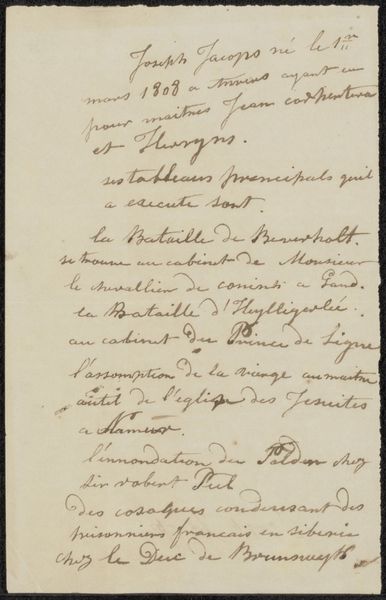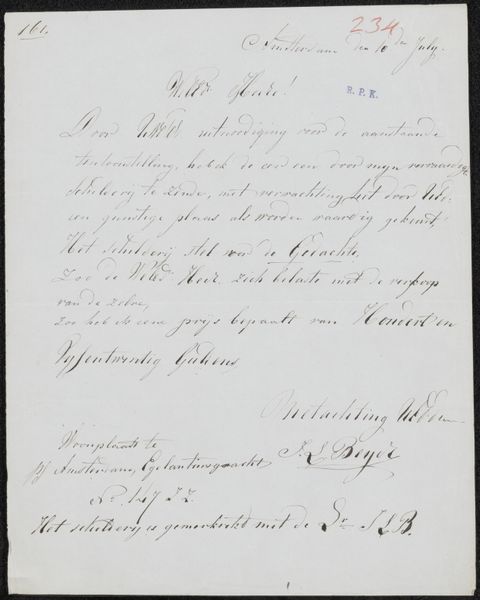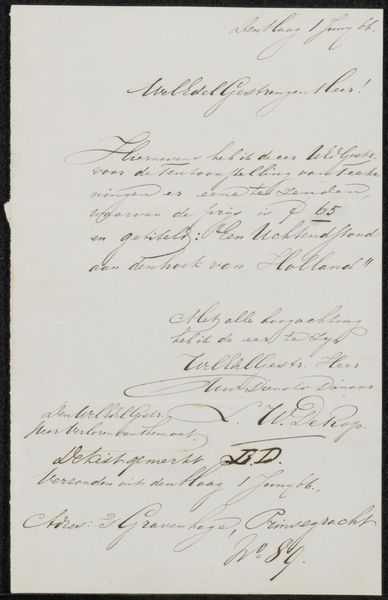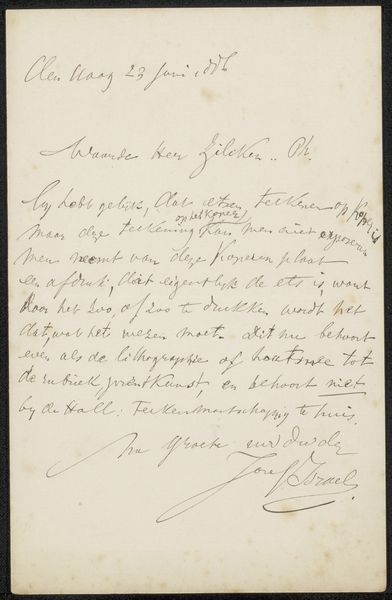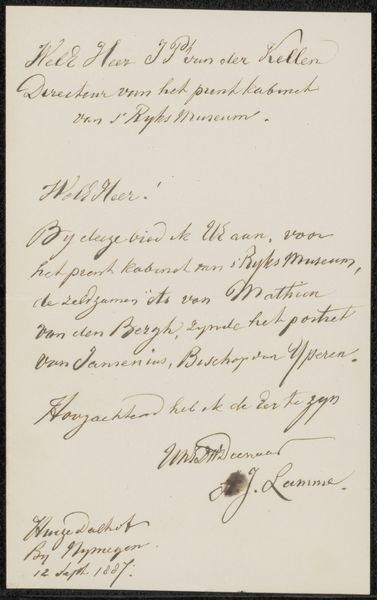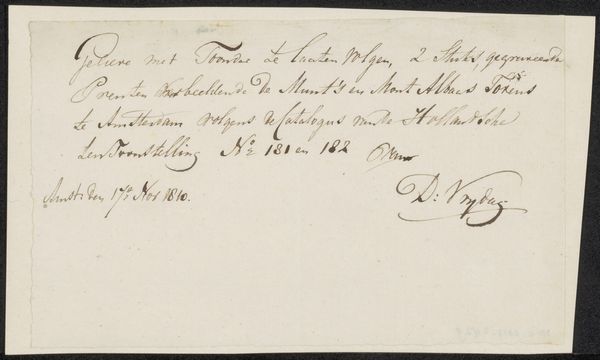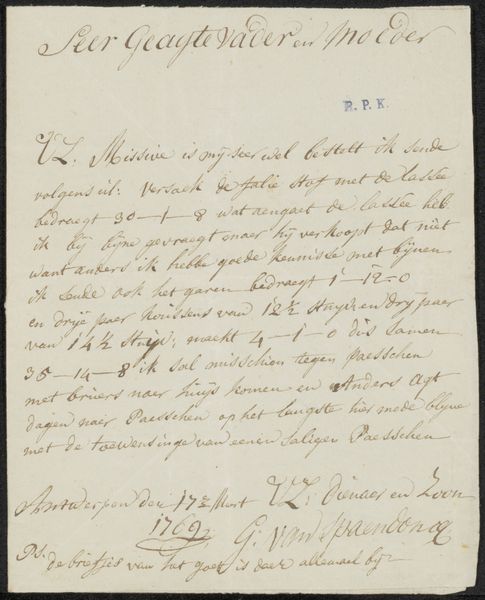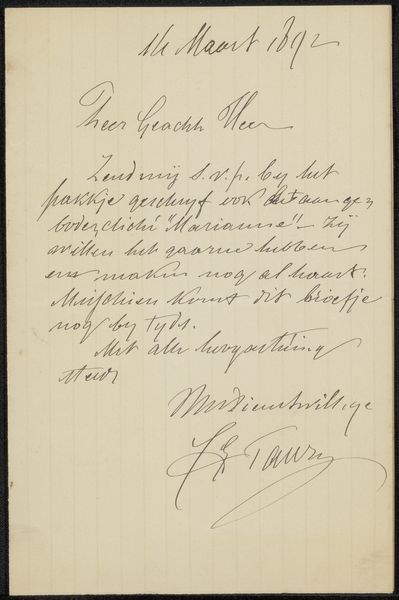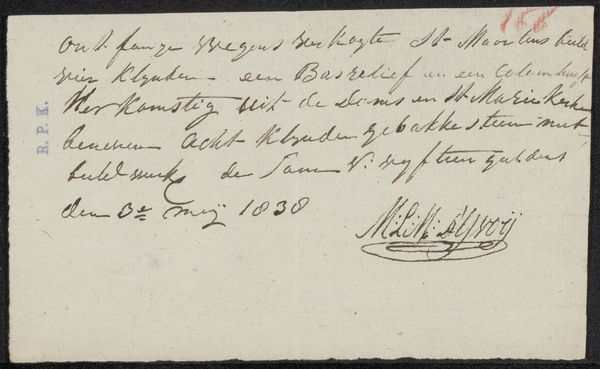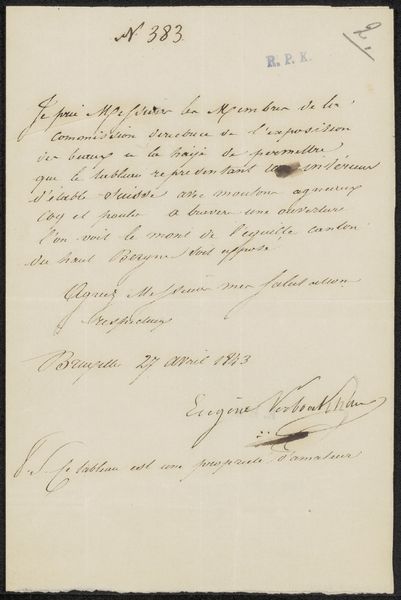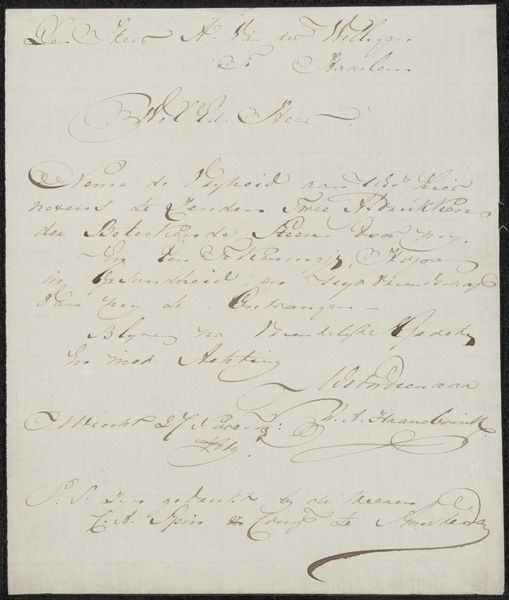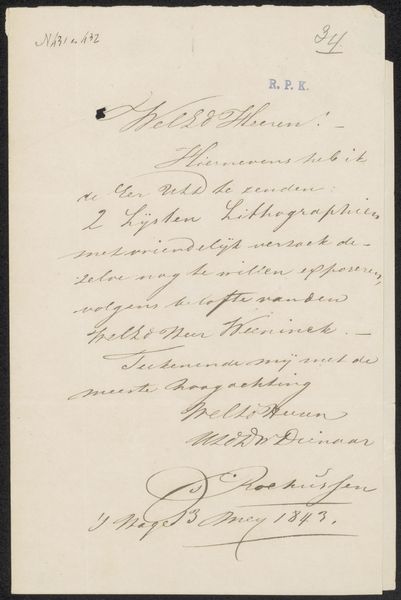
Aantekening betreffende de publicatie Verhandeling over Prenten Possibly 1808
0:00
0:00
drawing, paper, ink, pen
#
drawing
#
dutch-golden-age
#
paper
#
ink
#
pen
#
calligraphy
Copyright: Rijks Museum: Open Domain
Curator: It whispers secrets, doesn’t it? This sheet of paper with flowing script feels incredibly intimate. Editor: Indeed. What we're looking at is titled "Aantekening betreffende de publicatie Verhandeling over Prenten," or "Note regarding the publication Treatise on Prints." It is currently housed in the Rijksmuseum. The piece is attributed to Gerard van Nijmegen and possibly dates back to 1808. Crafted with pen and ink on paper, the artwork showcases beautiful calligraphy. Curator: Calligraphy is right, and the delicate shading with a brown tint of the ink. It's like a captured breath. The way the artist signed his name at the bottom – Gerard van Nijmegen - a flourish to announce presence. A connection over two centuries. But what was its original function? Editor: Its creation emerges from the Dutch Golden Age obsession with detailed record-keeping. While this specific function is a note concerning the translation of some treatise on prints, one must look at a culture obsessed with production of "things" and this emphasis on the written record emerges in the explosion of paper and drawing from the period. Curator: I hadn't thought of it that way. Seeing it here, displayed in a museum… the artistry shines through the historical context. It transcends a simple historical artifact and turns into an echo. Almost ghostly because, who can really read cursive nowadays, let alone script in a different language? Editor: Consider, too, the materiality, it's a common item, this combination of ink, pen, and paper—tools of communication and creation that democratized knowledge, breaking down the old ways that had been upheld in the halls of royalty. We should also mention that the style is clearly born of the Dutch Golden age. The text speaks volumes. Curator: Absolutely. To know a piece like this exists opens us to possibilities that transcend language, or perhaps even its initial reason for existence. Editor: Exactly. By situating this work within these various frameworks—medium, materials, style—we hopefully arrive at a better understanding of both the past and the creative act itself.
Comments
No comments
Be the first to comment and join the conversation on the ultimate creative platform.
